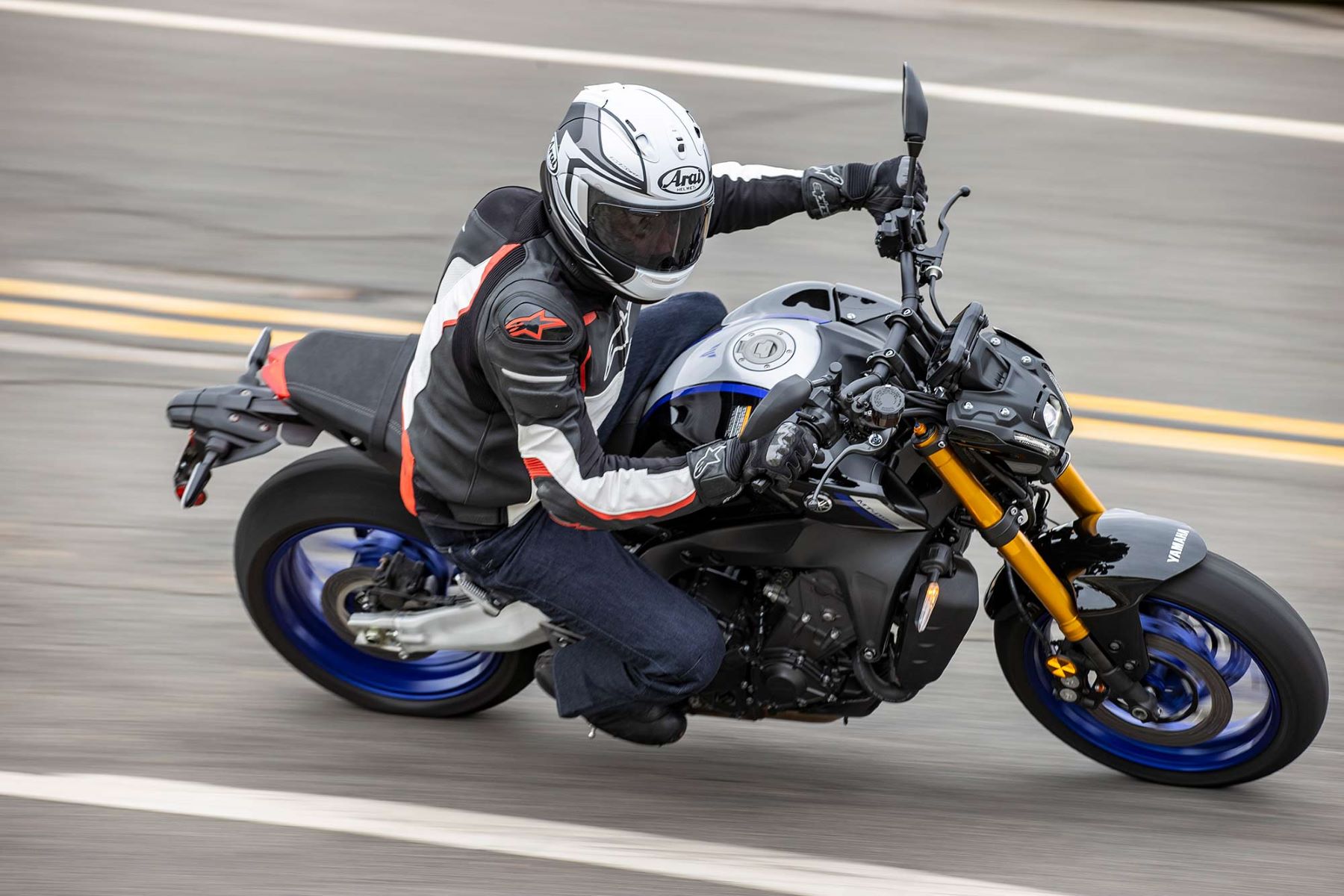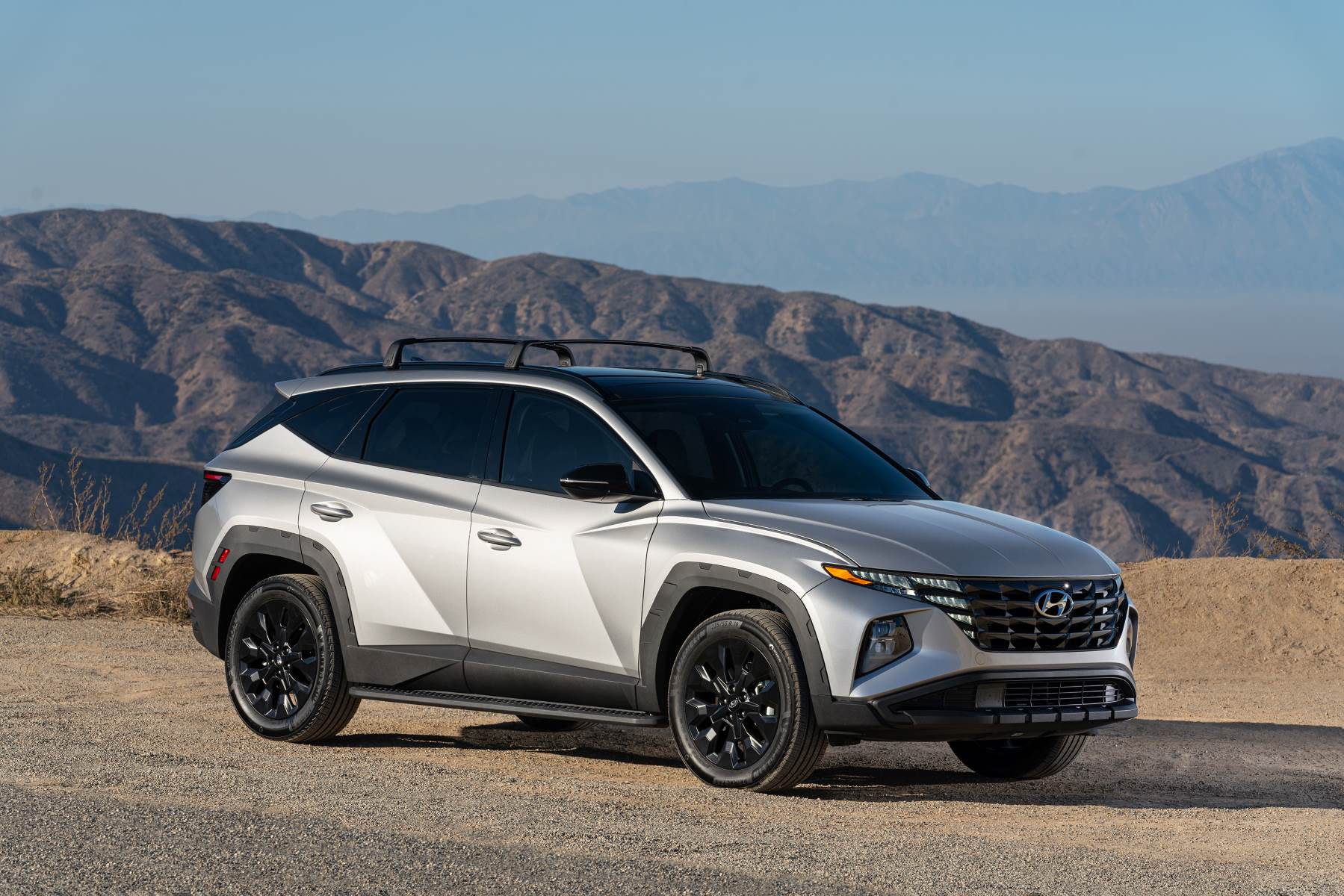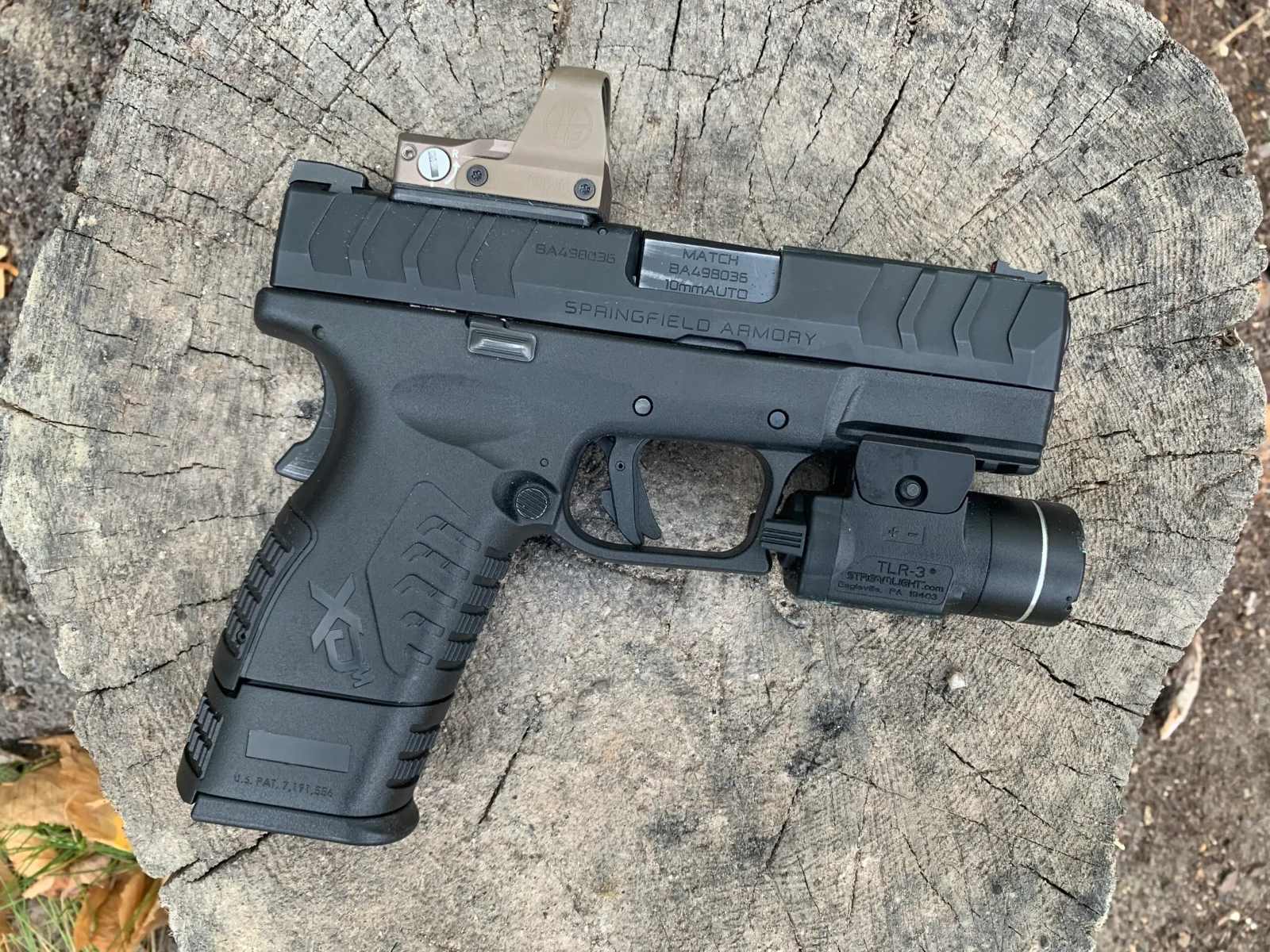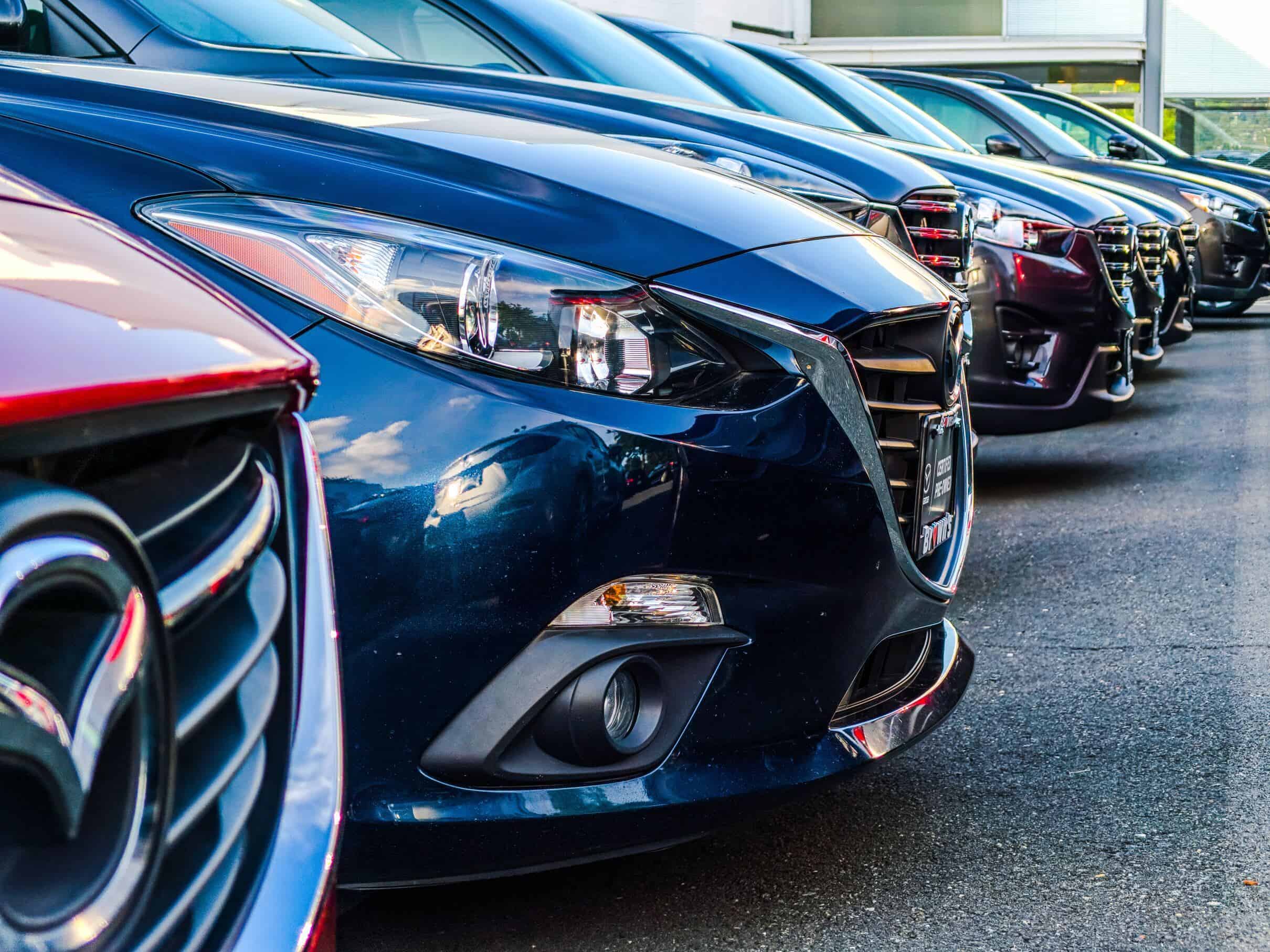Home>Automotive>The Ultimate Beginner’s Guide To The Safest And Easiest Motorcycle For Learning To Ride!


Automotive
The Ultimate Beginner’s Guide To The Safest And Easiest Motorcycle For Learning To Ride!
Published: February 8, 2024
Looking to learn to ride a motorcycle? Discover the safest and easiest options for beginners in the automotive world with our ultimate guide!
(Many of the links in this article redirect to a specific reviewed product. Your purchase of these products through affiliate links helps to generate commission for Regretless.com, at no extra cost. Learn more)
Table of Contents
Introduction
Learning to ride a motorcycle is an exhilarating adventure that opens up a world of freedom and excitement. As a beginner, choosing the right motorcycle is crucial for a safe and enjoyable learning experience. With the abundance of options available, it's essential to understand the factors that contribute to finding the safest and easiest motorcycle for beginners.
Riding a motorcycle is not just about transportation; it's about embracing a lifestyle and a sense of belonging to a community of enthusiasts. The motorcycle you choose as a beginner can greatly impact your learning journey and overall experience. With the right guidance and knowledge, you can confidently embark on this thrilling endeavor while ensuring your safety and comfort.
In this comprehensive guide, we will explore the key factors to consider when selecting a motorcycle for beginners. From understanding the different types of motorcycles to identifying the safest and easiest models for learning to ride, this guide aims to provide valuable insights to empower you in making an informed decision. Additionally, we will delve into essential tips for learning to ride safely, equipping you with the knowledge and confidence needed to kick-start your motorcycle journey.
Whether you're drawn to the sleek design of sport bikes, the versatility of standard motorcycles, or the laid-back appeal of cruisers, this guide will help you navigate the diverse options available in the market. By the end of this journey, you'll be equipped with the knowledge to make a well-informed decision and set the wheels in motion for an exciting and fulfilling motorcycle learning experience.
Choosing the Right Motorcycle for Beginners
Selecting the ideal motorcycle as a beginner is a pivotal decision that can profoundly influence your learning experience and overall enjoyment. With a myriad of options available, understanding the key considerations can help you make an informed choice. As a novice rider, it's essential to prioritize safety, comfort, and ease of handling when choosing your first motorcycle.
One of the fundamental factors to consider is the type of motorcycle that aligns with your riding style and preferences. Different types of motorcycles cater to varying riding experiences, from the nimble and agile sport bikes to the laid-back and relaxed cruisers. Understanding the characteristics and intended use of each type can guide you in narrowing down your options.
Additionally, assessing your physical stature and comfort level is crucial in selecting a motorcycle that suits your body type. The ergonomics of the motorcycle, including seat height, handlebar position, and overall fit, play a significant role in ensuring a comfortable and confident riding experience. As a beginner, being able to reach the ground firmly with your feet while seated on the motorcycle can instill a sense of stability and control.
Furthermore, considering the power and engine displacement of the motorcycle is vital for beginners. Opting for a motorcycle with a manageable power output and a displacement that aligns with your skill level can contribute to a smoother learning curve. It's advisable to start with a motorcycle that offers a balance of power and agility without overwhelming you with excessive speed and performance.
Moreover, evaluating the maintenance requirements and overall affordability of the motorcycle is essential for novice riders. Choosing a motorcycle with accessible maintenance and reasonable upkeep costs can alleviate potential stress and financial burden. Additionally, factoring in the availability of beginner-friendly accessories and safety features, such as anti-lock braking systems (ABS) and traction control, can enhance your confidence and safety on the road.
By carefully considering these factors, you can narrow down your options and identify the most suitable motorcycle for your beginner's journey. Whether you're drawn to the sleek and sporty appeal of a sport bike or the relaxed cruising experience of a standard motorcycle, understanding these considerations can empower you to make a well-informed decision that sets the stage for a fulfilling and enjoyable learning experience.
Factors to Consider When Selecting a Motorcycle
Choosing the right motorcycle as a beginner involves a thoughtful evaluation of several crucial factors to ensure a safe, comfortable, and enjoyable learning experience. Understanding these factors can guide novice riders in making an informed decision that aligns with their preferences and skill level.
First and foremost, the type of motorcycle plays a pivotal role in shaping the riding experience. Different types, such as sport bikes, cruisers, standard motorcycles, and dual-sport bikes, offer distinct characteristics tailored to diverse riding styles. For instance, sport bikes are known for their agile handling and high-performance capabilities, making them ideal for enthusiasts seeking adrenaline-pumping rides. On the other hand, cruisers exude a laid-back and relaxed vibe, appealing to riders looking for a more leisurely experience. By understanding the intended use and features of each type, beginners can narrow down their options based on their riding preferences.
Additionally, assessing one's physical stature and comfort on the motorcycle is essential. The ergonomics of the motorcycle, including seat height, handlebar position, and overall fit, significantly impact the rider's comfort and confidence. For novice riders, being able to firmly plant their feet on the ground while seated on the motorcycle instills a sense of stability and control, contributing to a more relaxed and secure riding experience.
Furthermore, considering the power and engine displacement of the motorcycle is crucial for beginners. Opting for a motorcycle with a manageable power output and displacement that aligns with the rider's skill level can contribute to a smoother learning curve. Starting with a motorcycle that offers a balance of power and agility without overwhelming speed can instill confidence and facilitate skill development.
Moreover, evaluating the maintenance requirements and overall affordability of the motorcycle is paramount. Novice riders should consider the accessibility of maintenance, as well as the associated costs, to ensure a seamless ownership experience. Additionally, factoring in beginner-friendly accessories and safety features, such as ABS and traction control, can enhance safety and confidence on the road.
By carefully considering these factors, beginner riders can narrow down their options and identify the most suitable motorcycle for their learning journey. Whether drawn to the sporty allure of a sport bike, the relaxed cruising experience of a standard motorcycle, or the versatility of a dual-sport bike, understanding these considerations empowers individuals to make a well-informed decision, setting the stage for a fulfilling and enjoyable learning experience.
The Safest and Easiest Motorcycle Models for Learning to Ride
When it comes to learning to ride a motorcycle, selecting a model that prioritizes safety, ease of handling, and rider comfort is paramount. Novice riders often seek motorcycles that offer a forgiving learning curve while instilling confidence and control. Several motorcycle models stand out as ideal options for beginners, combining safety features, manageable power, and user-friendly characteristics to facilitate a smooth learning experience.
Standard Motorcycles
Standard motorcycles, also known as naked bikes, are revered for their versatility and user-friendly nature, making them an excellent choice for novice riders. These motorcycles typically feature an upright riding position, providing a comfortable and commanding stance for riders. With moderate power output and predictable handling, standard motorcycles offer a balanced and forgiving learning experience. Additionally, their neutral ergonomics and accessible maintenance make them an attractive option for beginners seeking a practical and adaptable ride.
Cruiser Motorcycles
Cruiser motorcycles, characterized by their laid-back riding position and relaxed demeanor, appeal to riders looking for a leisurely and approachable experience. Their low seat height and easy-to-reach handlebars contribute to a stable and confidence-inspiring ride, ideal for those new to motorcycling. Cruiser models often prioritize low-end torque and smooth power delivery, enhancing control and comfort for beginner riders. With their iconic style and emphasis on rider comfort, cruiser motorcycles provide a welcoming entry point for individuals embarking on their motorcycle journey.
Dual-Sport Motorcycles
Dual-sport motorcycles, designed for both on-road and off-road adventures, offer a unique blend of versatility and beginner-friendly characteristics. These models feature a comfortable upright riding position and agile handling, allowing novice riders to navigate various terrains with ease. Dual-sport motorcycles typically boast a manageable power delivery, enabling riders to build confidence both on and off the road. Their rugged build and adaptable nature make them an appealing choice for beginners seeking a motorcycle that can accommodate diverse riding environments.
Small Displacement Sport Bikes
Small displacement sport bikes, such as 250cc and 300cc models, cater to beginners looking to experience the sporty appeal of motorcycles while maintaining a manageable power output. These lightweight and agile machines offer nimble handling and responsive performance, allowing novice riders to hone their skills without feeling overwhelmed by excessive power. Small displacement sport bikes often feature user-friendly ergonomics and modern safety technologies, providing a conducive platform for learning and skill development.
By considering these safest and easiest motorcycle models, beginner riders can make an informed decision based on their preferences and riding aspirations. Each of these models offers distinct advantages tailored to novice riders, emphasizing safety, ease of handling, and rider-friendly characteristics. Ultimately, selecting the right motorcycle sets the stage for an enriching and enjoyable learning journey, laying the foundation for a lifelong passion for motorcycling.
Tips for Learning to Ride Safely
Learning to ride a motorcycle is an exhilarating journey that requires a mindful approach to safety and skill development. As a beginner, prioritizing safety measures and adopting best practices can significantly enhance the learning experience while fostering a responsible and confident riding mindset. Here are essential tips to guide novice riders in learning to ride safely:
-
Enroll in a Certified Training Program: Participating in a reputable motorcycle training course equips beginners with fundamental riding skills, road awareness, and defensive techniques. Certified instructors provide invaluable guidance, creating a structured learning environment that instills essential safety habits from the outset.
-
Gear Up for Protection: Wearing appropriate safety gear is non-negotiable for novice riders. Investing in a DOT-approved helmet, protective riding jacket, gloves, pants, and boots can mitigate the impact of potential accidents and enhance overall rider safety.
-
Start in Low-Traffic Environments: Beginning in low-traffic areas or empty parking lots allows novice riders to familiarize themselves with motorcycle controls and maneuvering in a controlled setting. Practicing basic skills, such as starting, stopping, and turning, in a less congested environment builds confidence before venturing onto busier roads.
-
Master the Basics: Prioritize mastering fundamental riding skills, including clutch control, throttle management, braking techniques, and proper body positioning. Building a strong foundation in these essential skills lays the groundwork for safe and confident riding.
-
Practice Defensive Riding: Embracing a defensive riding mindset involves anticipating potential hazards, maintaining situational awareness, and being proactive in response to road conditions and other motorists' behaviors. Defensive riding minimizes risks and enhances overall safety on the road.
-
Respect Speed Limits and Traffic Laws: Adhering to speed limits and traffic regulations is paramount for novice riders. Respecting these guidelines fosters a disciplined approach to riding and contributes to a safer and more harmonious road environment.
-
Continuous Learning and Improvement: Embracing a commitment to continuous learning and skill improvement is essential for novice riders. Seeking feedback, refining riding techniques, and staying informed about motorcycle safety practices contribute to ongoing growth and confidence as a motorcyclist.
-
Ride Within Your Comfort Zone: As a beginner, it's crucial to ride within your comfort level and gradually expand your skills and riding experiences. Avoiding high-stress or challenging situations early in the learning process promotes a positive and controlled approach to skill development.
By embracing these tips for learning to ride safely, novice riders can embark on their motorcycle journey with a strong emphasis on safety, skill development, and responsible riding practices. Incorporating these principles from the outset establishes a solid foundation for a fulfilling and secure motorcycling experience.
Conclusion
Embarking on the journey of learning to ride a motorcycle is a thrilling and transformative experience that holds the promise of freedom, adventure, and camaraderie. As a beginner, the process of selecting the right motorcycle sets the stage for a fulfilling and safe learning journey. By understanding the crucial factors that influence the choice of a motorcycle, novice riders can make informed decisions that align with their preferences, skill level, and safety considerations.
The diverse landscape of motorcycle types, including standard motorcycles, cruisers, dual-sport bikes, and small displacement sport bikes, offers a spectrum of options for beginners to explore. Each type presents unique characteristics tailored to different riding styles and aspirations, empowering individuals to select a motorcycle that resonates with their vision of the ideal riding experience. Additionally, prioritizing safety features, manageable power output, and user-friendly ergonomics ensures that novice riders can approach their learning journey with confidence and comfort.
Furthermore, the emphasis on safety and responsible riding practices is paramount for individuals venturing into the world of motorcycling. Enrolling in certified training programs, embracing defensive riding techniques, and continuously honing fundamental skills contribute to a culture of safety and skill development. By integrating these principles into their learning process, novice riders can lay a solid foundation for a lifetime of safe and enjoyable motorcycling experiences.
Ultimately, the journey of learning to ride a motorcycle transcends the acquisition of a new skill; it embodies a profound sense of freedom, self-discovery, and connection with a vibrant community of riders. The motorcycle chosen as a beginner becomes not just a mode of transportation, but a companion that accompanies riders on a transformative odyssey. As beginners take their first steps into the world of motorcycling, equipped with the knowledge and insights shared in this guide, they are poised to embrace the open road with confidence, enthusiasm, and a deep appreciation for the art of riding.
In conclusion, the decision to embark on the path of motorcycling as a beginner is an invitation to embark on a journey of self-discovery, adventure, and lifelong passion. By selecting the right motorcycle, prioritizing safety, and embracing responsible riding practices, novice riders can lay the groundwork for a fulfilling and secure motorcycling experience, paving the way for countless memorable rides and cherished moments on two wheels.













